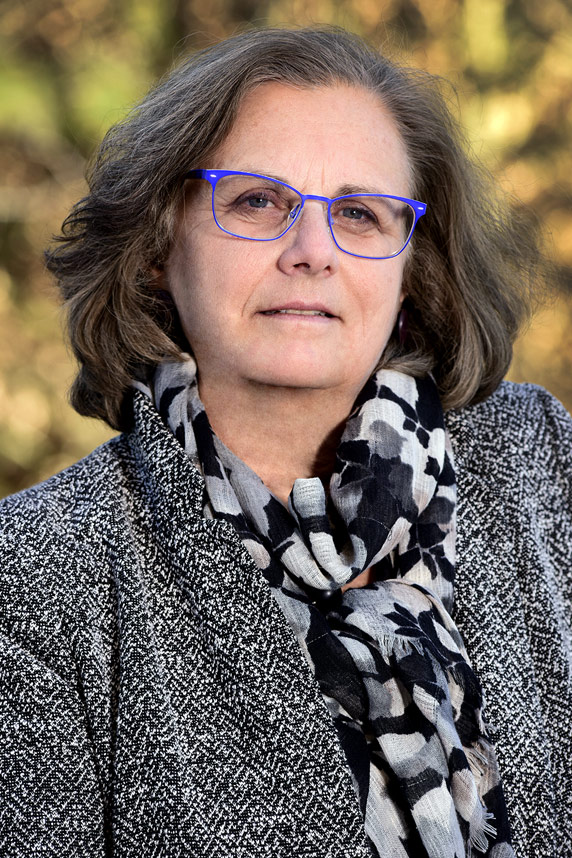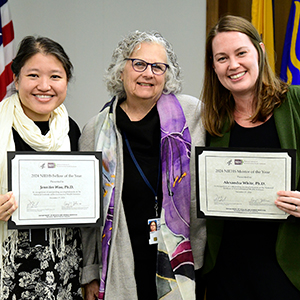The annual U.S. News and World Report Best Jobs report is out and this year’s No.1 science job is epidemiology. Epidemiology is a medical science that investigates all the factors that determine the presence or absence of diseases and disorders in populations. The report featured NIEHS Epidemiology Branch Chief and Senior Investigator Dale Sandler, Ph.D. She weighed in on what it is like to work as an epidemiologist.

“The thing about epidemiology is it’s a career that can go in many different directions,” Sandler told U.S. News. She explained that epidemiologists work in hospitals and practice infection control, and they work for governmental agencies like the National Institutes of Health (NIH) and the Centers for Disease Control and Prevention (CDC) to track outbreaks of infectious or noninfectious illnesses, develop vaccines, and help eradicate diseases. She also explained that they study non-infectious disease and mentioned her work in large population cohorts.
Epidemiology at NIEHS
The NIEHS Epidemiology Branch is made up of eight epidemiology research groups led by intramural scientists.
- Environment and Cancer Epidemiology Group, led by Alexandra White, Ph.D.
- Fertility and Reproductive Health Group, led by Anne Marie Jukic, Ph.D.
- Genomics and the Environment in Respiratory and Allergic Health Group, led by Stephanie London, M.D., Dr. P.H.
- Molecular and Genetic Epidemiology Group, led by Jack Taylor, M.D., Ph.D.
- Perinatal and Early Life Epidemiology Group, led by Kelly Ferguson, Ph.D.
- Social and Environmental Determinants of Health Equity Group, led by Chandra Jackson, Ph.D.
- Women’s Health Group, led by Donna Baird, Ph.D.
Sandler leads the Chronic Disease Epidemiology Group.
NIEHS epidemiological studies
Among their work, NIEHS intramural scientists lead numerous long-term prospective epidemiological studies.
- Sister Study
The Sister Study is a prospective cohort study examining the environmental and genetic risk factors for breast cancer and other diseases among 50,884 sisters of women who have had breast cancer. The Sister Study will commemorate its 20th anniversary in October. - The GuLF Study
The Gulf Long-term Follow-up Study investigates potential health effects associated with response and clean-up activities following the 2010 Deepwater Horizon oil spill disaster in the Gulf of Mexico. Nearly 33,000 individuals who performed oil spill related work or received safety training but did not participate in the oil spill response are enrolled in the study. - Agricultural Health Study
The Agricultural Health Study is a collaboration among NIEHS, the National Cancer Institute (NCI), and the Environmental Protection Agency (EPA) to follow a prospective study cohort of licensed pesticide applicators and their spouses from North Carolina and Iowa, all of whom were recruited in 1993-1997. - SELF Study
The Study of the Environment, Lifestyle, and Fibroids follows 1,700 participants to better understand uterine fibroids, follow fibroid growth, identify risk factors for fibroid development, and develop less invasive treatment interventions.
Visit the Studies page for a full list of NIEHS epidemiological studies.
NIEHS resources for epidemiologists
NIEHS offers various resources for epidemiologists, too.
- NIEHS-Funded Epidemiology Resources Faceted Search Tool — a web tool created to share information about NIEHS-funded environmental epidemiology studies. Users can search key terms and learn about NIEHS-funded research and researchers working in that area.
- Software Developed by Epidemiology Branch Investigators — various statistical packages are available for use.
“The NIEHS Epidemiology Branch is the ‘crown jewel’ of our intramural research program,” said NIEHS Scientific Director Darryl Zeldin, M.D. “NIEHS epidemiologists enhance the public health relevance of our work by helping us translate our basic and clinical research findings to human populations in addition to the primary data that they generate from their large prospective cohort studies and novel hypotheses. Their ability to go from lab bench to population and back again is a major strength of our intramural program.”
U.S. News ranks jobs by calculating seven component measures: 10-year growth volume, 10-year growth percentage, median salary, employment rate, future job prospects, stress level, and work-life balance. See 2023 Best Jobs report for the full article.
(Jennifer Harker, Ph.D., is a technical writer-editor in the NIEHS Office of Communications and Public Liaison.)









